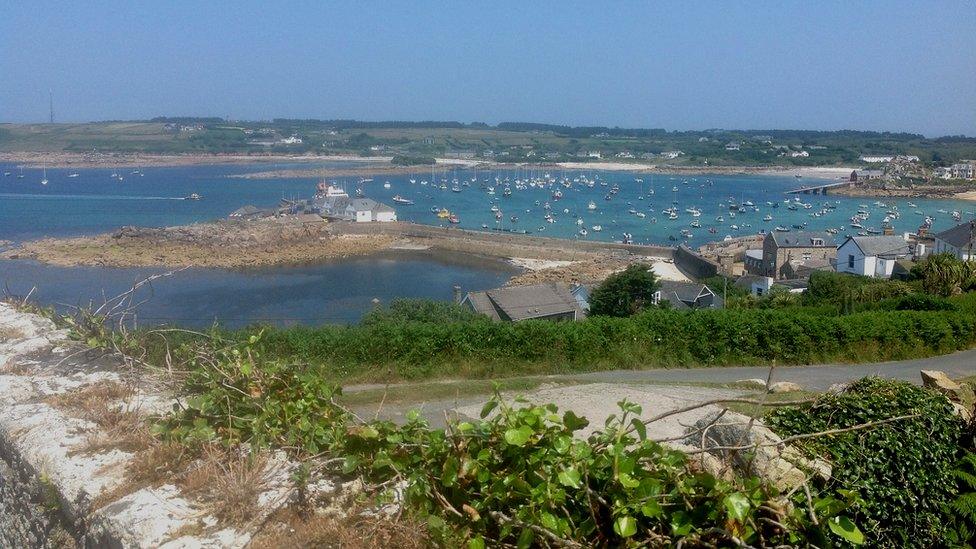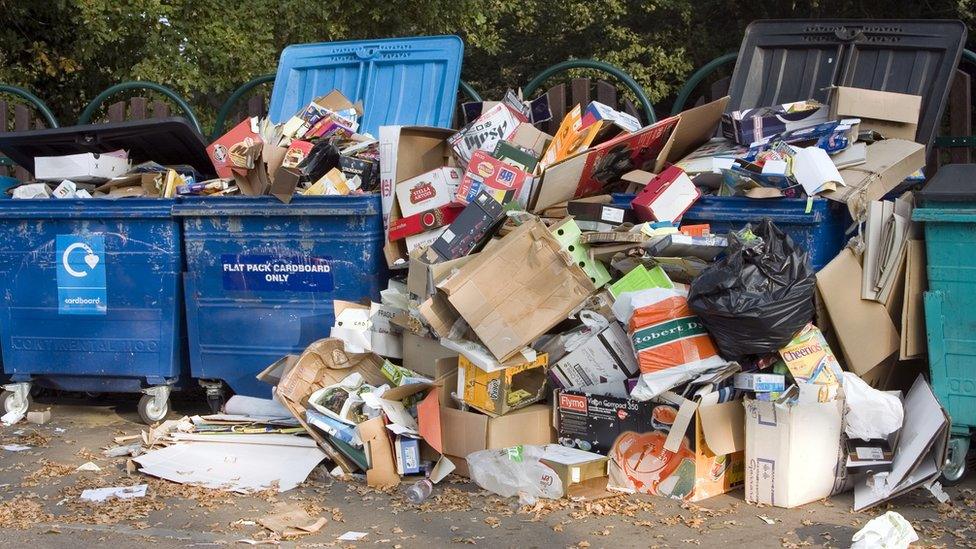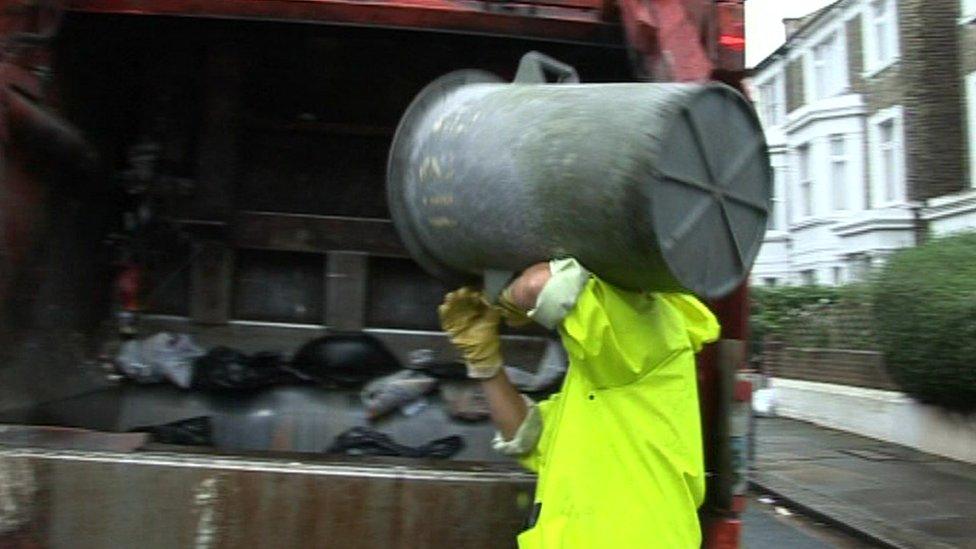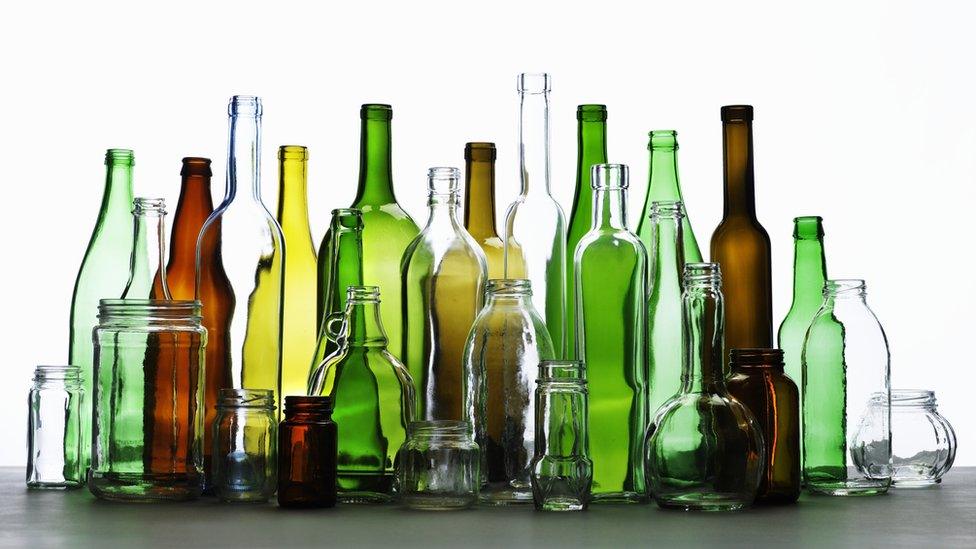England's waste rise blamed on 'recycling apathy'
- Published

The entire Isles of Scilly are an Area of Outstanding Natural Beauty. It is also the area which produces the largest amount of non-recyclable waste in England
Household waste has risen in nearly 60% of council areas despite efforts to promote recycling, it has emerged.
Figures collated by the BBC, external show eight councils have seen average household waste rise by more than 100kg in the past three years.
Experts say the rise is partly down to "green fatigue", external and people spending more after the economic downturn.
The government, which in 2013 claimed "significant progress", external in waste management, is yet to comment.
Swindon has seen the biggest rise across England with annual average household waste jumping 30% from 463kg (to 602kg since 2012-2013.
The council said as well as the rise in waste there had also been a drop in the amount of recycling - from 44% to 35%.
The introduction of a green waste charge, a switch from weekly to fortnightly recycling collections and housing growth were partly to blame, the council said.
"Over the same period," a spokesman for the council said, "we have seen a significant fall in the amount of waste sent to landfill.
"Three-quarters of all household waste in Swindon is now either recycled or processed through our own RDF plant (in which pellets made from waste are incinerated) to generate sustainable energy."

Are people in England becoming apathetic at the idea of recycling?
Margaret Bates, professor of sustainable waste at the University of Northampton, said the rise in waste produced in various parts of England was partly down to people spending more again in the aftermath of the 2008 economic crisis.
"But also there's some evidence that people are becoming a bit apathetic about recycling as well, because recycling rates have plateaued."

England's waste world in numbers

The average household in England produces 558kg of residual household waste each year, up from 551kg in 2012-2013
Household recycling rates decreased last year in Yorkshire and the Humber, London and the East Midlands. However, the overall rate across England rose from 43.5% to 43.7%.
Ashford Borough Council has the largest three-year reduction in household waste with a drop from 695kg to 350kg.

Residents of the Isles of Scilly - an Area of Outstanding Natural Beauty - produce the most non-recyclable waste in England, producing 1,242kg each year - four and a half times the average Vale of White Horse residents in Oxfordshire.
Tom Walton, council spokesman, said not only did the islands have a fairly unique geographical challenge when it came to dealing with waste, they also had to finance waste management from a population of about 2,300 people.
"We do face unique challenges and historically I think we've not really had a handle on waste," he said. "But we are starting to turn the waste issue around."
Last November the council took possession of a new waste truck.
People in the Vale of White Horse produce the least of waste annually at 274kg.
Vale of White Horse Council leader Matthew Barber said: "We take an awful lot more things at the kerbside than some other authorities, including batteries and textiles and small electrical items."
"Rather than having lots of different boxes for different recycling types we have alternating weekly collections - one for recycling and one for residual waste. It's simple and it works."
Waste reduction charity Wrap said while recycling had become a "social norm" levels had "started to plateau".
Linda Crichton, head of resource management at Wrap, said barriers to recycling included not believing there was an environmental benefit, confusion about what to put where and lack of a household routine.
- Published7 March 2016
